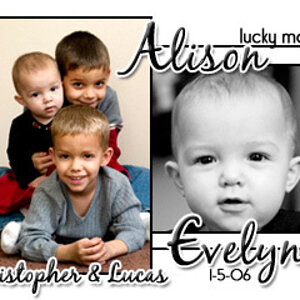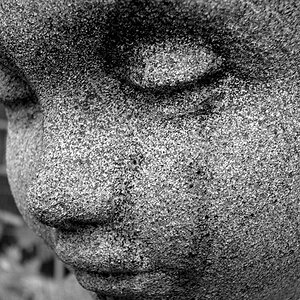Navigation
Install the app
How to install the app on iOS
Follow along with the video below to see how to install our site as a web app on your home screen.

Note: This feature currently requires accessing the site using the built-in Safari browser.
More options
You are using an out of date browser. It may not display this or other websites correctly.
You should upgrade or use an alternative browser.
You should upgrade or use an alternative browser.
Lens
- Thread starter Keith242
- Start date
goodguy
Been spending a lot of time on here!
- Joined
- Dec 5, 2012
- Messages
- 5,555
- Reaction score
- 1,121
- Location
- Toronto Canada
- Can others edit my Photos
- Photos OK to edit
Obviously no one can answer this question but I can recommend few for you to consider.
Nikon 85mm 1.4G
Nikon 105mm 1.4
Nikon 70-200mm 2.8 VRII
Lots more lenses can do this work in most impressive way.
And then you have Canon lenses, Sigma, Tamron, Sony "G" lenses and many more
For my own portraits I mostly use
Nikon 24-70mm 2.8G
Tamron 70-200mm 2.8 VC
Nikon 85mm 1.8G
Nikon 85mm 1.4G
Nikon 105mm 1.4
Nikon 70-200mm 2.8 VRII
Lots more lenses can do this work in most impressive way.
And then you have Canon lenses, Sigma, Tamron, Sony "G" lenses and many more
For my own portraits I mostly use
Nikon 24-70mm 2.8G
Tamron 70-200mm 2.8 VC
Nikon 85mm 1.8G
dennybeall
No longer a newbie, moving up!
- Joined
- May 13, 2014
- Messages
- 2,308
- Reaction score
- 441
- Location
- OTOW - Ocala, Florida
- Website
- www.citrusphotorestore.com
- Can others edit my Photos
- Photos OK to edit
Most folks find 85mm to be about right. So for a full frame camera a quality 85mm and for crop-sensor camera about 60mm.
No question, the best there is. Canon EF 85mm f/1.2L II USM Lens
photo1x1.com
No longer a newbie, moving up!
- Joined
- Sep 14, 2016
- Messages
- 923
- Reaction score
- 289
- Location
- Austria/Europe
- Website
- www.photo1x1.com
- Can others edit my Photos
- Photos NOT OK to edit
I´d too vote for an 85mm lens - the bigger the opening, the better. So f1.2 is probably as good as it can get. There is a difference when shooting with open aperture from lens to lens. Some are relatively sharp wide open, others need to be stopped down a bit.
However, recently for natural light outdoor portraits quite a few people use 50mm lenses - again also with f1.2 to max 1.8. They give you a somewhat "modern look" if that is something that can be modern at all . The difference is that you end up closer to the model for the same shot and this looks a little more intimate - some say more "real". You lose a bit of bokeh (blur in the background) though.
. The difference is that you end up closer to the model for the same shot and this looks a little more intimate - some say more "real". You lose a bit of bokeh (blur in the background) though.
However, recently for natural light outdoor portraits quite a few people use 50mm lenses - again also with f1.2 to max 1.8. They give you a somewhat "modern look" if that is something that can be modern at all
petrochemist
TPF junkie!
- Joined
- Mar 9, 2014
- Messages
- 1,873
- Reaction score
- 608
- Can others edit my Photos
- Photos OK to edit
No question, the best there is. Canon EF 85mm f/1.2L II USM Lens
That depends very much on which camera it's being used on, and the style of portrait wanted. If the OP is a Nikon shooter it would be completely useless.
I'm not a nikon shooter but it'll be of little use on any of my cameras, none of which would control the aperture or use the AF. On my MFT bodies I have an adapter that would allow me to focus it, but the focal length is somewhat long for a x2 crop body. On my Toyo the Focal length would be too wide & the coverage would be woefully inadequate.
The 85mm full frame FOV is generally recognized to be ideal for head & shoulder portraits & still works nicely for full length portraits, but if an environmental portrait is wanted (typically showing someone in their working environment) then a wider FOV is almost compulsory.
The 85mm recommendation comes from the fact that this length allows the subject to fill the frame nicely from the sort of distance we are used to interacting with people at. Wider lenses bring the photographer too close to fill the frame & so introduce distortions such as big noses...
As well as the FOV wider apertures are frequently desirable to reduce DOF & concentrate the viewers attention on the subject. Again in environmental portraits the background can be highly desirable...
- Joined
- Mar 8, 2011
- Messages
- 25,161
- Reaction score
- 9,010
- Location
- Iowa
- Website
- pixels.com
- Can others edit my Photos
- Photos NOT OK to edit
There is no such thing as 'the best'. Of anything. If there were, it would be the only one on the market.
Your budget will usually determine a limit to your choices, so if the FlareMaster 90mm f/0.45 (with it's 48 rounded aperture blades) costs $2000 and you only have $500 to spend, it's not an option.
It would also help to know what camera(s) you are using. Suggesting a Canon lens to a Nikon shooter is rather pointless.
Your budget will usually determine a limit to your choices, so if the FlareMaster 90mm f/0.45 (with it's 48 rounded aperture blades) costs $2000 and you only have $500 to spend, it's not an option.
It would also help to know what camera(s) you are using. Suggesting a Canon lens to a Nikon shooter is rather pointless.
Canon cameraNo question, the best there is. Canon EF 85mm f/1.2L II USM Lens
That depends very much on which camera it's being used on, and the style of portrait wanted. If the OP is a Nikon shooter it would be completely useless.
I'm not a nikon shooter but it'll be of little use on any of my cameras, none of which would control the aperture or use the AF. On my MFT bodies I have an adapter that would allow me to focus it, but the focal length is somewhat long for a x2 crop body. On my Toyo the Focal length would be too wide & the coverage would be woefully inadequate.
The 85mm full frame FOV is generally recognized to be ideal for head & shoulder portraits & still works nicely for full length portraits, but if an environmental portrait is wanted (typically showing someone in their working environment) then a wider FOV is almost compulsory.
The 85mm recommendation comes from the fact that this length allows the subject to fill the frame nicely from the sort of distance we are used to interacting with people at. Wider lenses bring the photographer too close to fill the frame & so introduce distortions such as big noses...
As well as the FOV wider apertures are frequently desirable to reduce DOF & concentrate the viewers attention on the subject. Again in environmental portraits the background can be highly desirable...
Solarflare
No longer a newbie, moving up!
- Joined
- May 24, 2012
- Messages
- 2,898
- Reaction score
- 395
Ringflash and any lens.
Otherwise the best portrait lenses of the world are AFAIK, in no particular order:
Nikkor AF 135mm f2 [D] DC - Ken Rockwell calls this the "King of Bokeh"
Nikkor AF 105mm f2 [D] DC - Rockwell: "Prince of Bokeh"
Carl Zeiss Planar 85mm f1.4 (ZF|ZF.2|ZE) - will probably soon reach end of production; the new Milvus is a completely different lens.
Canon EF 85mm f1.2
(Nikon AI|Nikon AI-S|Nikon AF|Nikon AF-S|Canon EF) 300mm f2.8 - esp for fashion; 400mm works too
Nikkor AI 135mm f3.5
Nikkor AI 105mm f2.5
Nikon 100mm f2.8 E-Series
Voigtländer "Nokton" 58mm f1.4 SLII [N|S]
Tamron 45mm f1.8 VC - The widest lens I know thats a Bokeh-Cream-Machine
The Zeiss Makro Planar 100mm f2 that I'm using for portraiture also has really good Bokeh, so its not so bad for the job. As would be the Tokina 100mm f2.8 macro.
I dont claim I know all good Canon lenses, mind.
There is also some Minolta lens whichs name I can remember thats famous. It has an Apodization-Filter in it. Unfortunately that has all kinds of bad consequences, including pure manual focus and the lens is dark and the actual depth of field gets wider thanks to the filter. And frankly the effect isnt that strong to begin with.
I have no clue about Pentax having an exceptionally good portrait lens.
Otherwise the best portrait lenses of the world are AFAIK, in no particular order:
Nikkor AF 135mm f2 [D] DC - Ken Rockwell calls this the "King of Bokeh"
Nikkor AF 105mm f2 [D] DC - Rockwell: "Prince of Bokeh"
Carl Zeiss Planar 85mm f1.4 (ZF|ZF.2|ZE) - will probably soon reach end of production; the new Milvus is a completely different lens.
Canon EF 85mm f1.2
(Nikon AI|Nikon AI-S|Nikon AF|Nikon AF-S|Canon EF) 300mm f2.8 - esp for fashion; 400mm works too
Nikkor AI 135mm f3.5
Nikkor AI 105mm f2.5
Nikon 100mm f2.8 E-Series
Voigtländer "Nokton" 58mm f1.4 SLII [N|S]
Tamron 45mm f1.8 VC - The widest lens I know thats a Bokeh-Cream-Machine
The Zeiss Makro Planar 100mm f2 that I'm using for portraiture also has really good Bokeh, so its not so bad for the job. As would be the Tokina 100mm f2.8 macro.
I dont claim I know all good Canon lenses, mind.
There is also some Minolta lens whichs name I can remember thats famous. It has an Apodization-Filter in it. Unfortunately that has all kinds of bad consequences, including pure manual focus and the lens is dark and the actual depth of field gets wider thanks to the filter. And frankly the effect isnt that strong to begin with.
I have no clue about Pentax having an exceptionally good portrait lens.
Last edited:
- Joined
- Apr 9, 2009
- Messages
- 41,401
- Reaction score
- 5,706
- Location
- Iowa
- Website
- kharrodphotography.blogspot.com
- Can others edit my Photos
- Photos OK to edit
How many people would be in a portrait, the type of portrait, and if you're shooting indoors or on location, determine which focal length lens works best.
For doing portraiture as a business, I had 14 lenses.
My goto/favorite portrait lens was my 200 mm f/2 prime lens.
Second favorite was my 135 mm, f/2 DC (de-focus control) lens with my 105 mm, f/2 DC lens being 3rd favorite.
In some situations a 50 mm f/1.2 was the right lens.
In others it was a 300 mm f/2.8 lens.
For doing portraiture as a business, I had 14 lenses.
My goto/favorite portrait lens was my 200 mm f/2 prime lens.
Second favorite was my 135 mm, f/2 DC (de-focus control) lens with my 105 mm, f/2 DC lens being 3rd favorite.
In some situations a 50 mm f/1.2 was the right lens.
In others it was a 300 mm f/2.8 lens.
fmw
No longer a newbie, moving up!
You can make portraits with any lens. I have a penchant for wide angle photography and often use wide angle lenses but I don't shoot traditional studio portraits.
What others are suggesting to you are telephoto lenses. The reason involves perspective. The further you are from your subject, the more foreshortening you get in your image. The perspective becomes flattened at a distance and that provides what most people consider to be the most attractive approach. The telephoto lens lets you back up from your subject and still fill the frame. I shot some fashion photography some years ago and most often used a 300mm lens on 35mm for the purpose of getting as much foreshortening as I could. If you have a crop sensor camera that would be a 200mm to fill the frame the same way. It takes some room for that so most people choose a shorter lens so they can get closer to the subject.
The point is that any lens will do portraiture. Each will do it in a different way and the right way is the way you like it or, if you are shooting professionally, the way your client wants it. Hope that helped at least a little.
What others are suggesting to you are telephoto lenses. The reason involves perspective. The further you are from your subject, the more foreshortening you get in your image. The perspective becomes flattened at a distance and that provides what most people consider to be the most attractive approach. The telephoto lens lets you back up from your subject and still fill the frame. I shot some fashion photography some years ago and most often used a 300mm lens on 35mm for the purpose of getting as much foreshortening as I could. If you have a crop sensor camera that would be a 200mm to fill the frame the same way. It takes some room for that so most people choose a shorter lens so they can get closer to the subject.
The point is that any lens will do portraiture. Each will do it in a different way and the right way is the way you like it or, if you are shooting professionally, the way your client wants it. Hope that helped at least a little.
beagle100
Been spending a lot of time on here!
- Joined
- Mar 31, 2015
- Messages
- 2,073
- Reaction score
- 546
- Can others edit my Photos
- Photos OK to edit
What is the best lens for portrait photography
200mm f/2 and 135mm f/2
like this portrait photographer
www.flickr.com/photos/desertrose76
Similar threads
- Replies
- 22
- Views
- 3K
- Replies
- 13
- Views
- 490
- Replies
- 2
- Views
- 448
- Replies
- 5
- Views
- 141

![[No title]](/data/xfmg/thumbnail/42/42326-1e75ade9716f7e863d85def8d13cf591.jpg?1619740127)
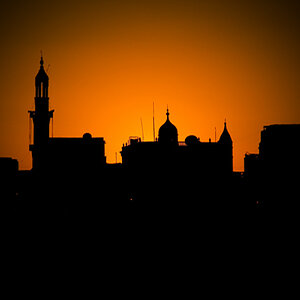
![[No title]](/data/xfmg/thumbnail/32/32810-094482c1ef1c76eae62a96107013a72e.jpg?1619735669)
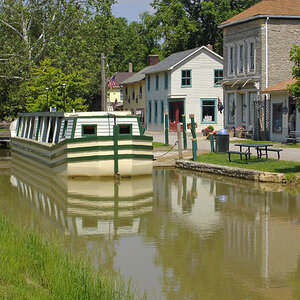
![[No title]](/data/xfmg/thumbnail/32/32165-6bb394c486dda7ec16d8fee786f03151.jpg?1619735234)
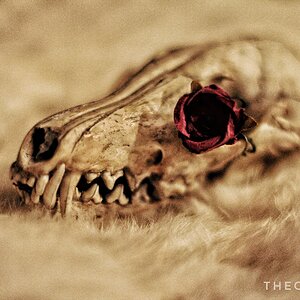
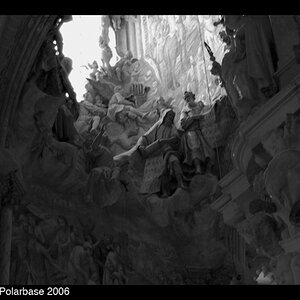
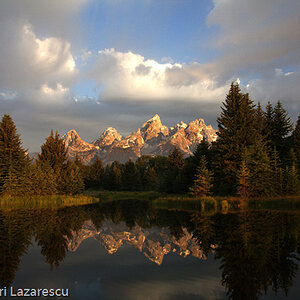
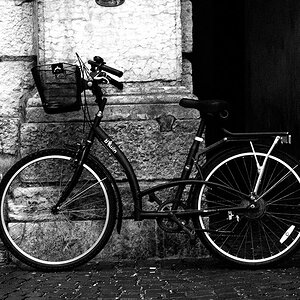
![[No title]](/data/xfmg/thumbnail/32/32808-9d1f657a1903d3bdbd67ea830397d62c.jpg?1619735668)
